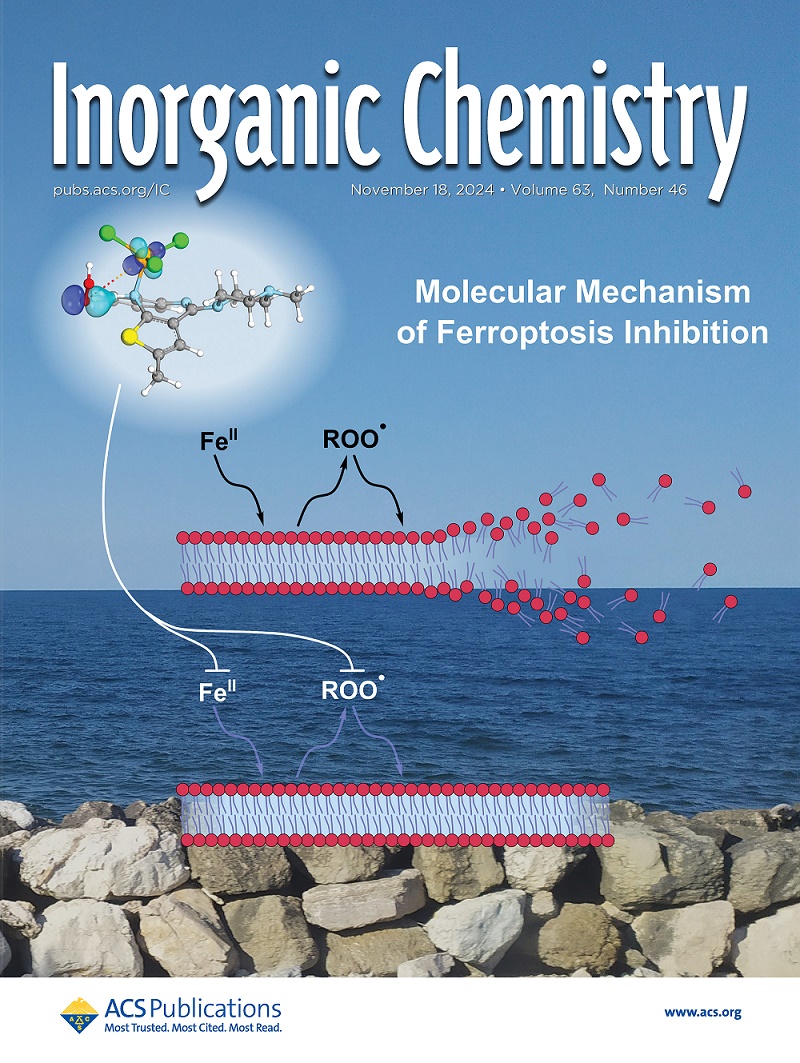Dependence of O2 Depletion on Transition Metal Catalyst in Radical Polymerization of Cross-Linking Alkene Resins
IF 4.3
2区 化学
Q1 CHEMISTRY, INORGANIC & NUCLEAR
引用次数: 0
Abstract
Cobalt(II) carboxylates show broad reactivity with peroxides and O2 and are the industry standard catalyst for the activation of peroxide initiators for the radical polymerization of alkenes under ambient conditions. Curing alkene-based resins containing cross-linking units, i.e., monomers containing two or more alkene units, is important in forming hard protective coatings and materials. The activation of peroxide initiators produces the propagating chain end radicals needed for polymerization. Since polymerization progress depends on the rate of initiator activation and the concentration of propagating radicals, interception of radicals by O2 can inhibit curing. Cobalt(II) carboxylates are used due to their reactivity in the presence of oxygen, even in resin coatings. Alternative catalysts based on manganese and iron are desirable. Hence, the impact of O2 on their performance in resin curing is of interest. Here, we use NIR emission and time-resolved spectroscopy, employing the O2-sensitive probe [Ru(ph2phen)3]2+, to determine the concentration of dissolved [O2] in alkene resins during curing with three representative catalysts, Co(II)(2-ethylhexanoate)2, Fe(II)-bispidine, and Mn(II)(neodecanoate)2. The rate of depletion of O2 is highly dependent on the catalyst used, but in all cases, it is well before the onset of the autoacceleration of polymerization in cross-linking resins.

钴(II)羧酸盐与过氧化物和 O2 具有广泛的反应活性,是活化过氧化物引发剂的工业标准催化剂,可用于烯烃在环境条件下的自由基聚合。固化含有交联单元(即含有两个或两个以上烯单元的单体)的烯基树脂对于形成坚硬的保护涂层和材料非常重要。过氧化物引发剂的活化可产生聚合所需的链端自由基。由于聚合过程的进展取决于引发剂的活化速度和传播自由基的浓度,因此 O2 对自由基的拦截会抑制固化。由于钴(II)羧酸盐在氧气存在下具有反应活性,即使在树脂涂层中也可使用。基于锰和铁的替代催化剂是可取的。因此,氧气对它们在树脂固化中的性能的影响令人感兴趣。在此,我们使用对 O2 敏感的探针 [Ru(ph2phen)3]2+,利用近红外发射和时间分辨光谱测定了三种代表性催化剂(Co(II)(2-乙基己酸酯)2、Fe(II)-双脒和 Mn(II)(新癸酸酯)2)在固化过程中烯树脂中溶解的 [O2] 的浓度。O2 的耗尽速度在很大程度上取决于所使用的催化剂,但在所有情况下,都远早于交联树脂聚合自加速的开始时间。
本文章由计算机程序翻译,如有差异,请以英文原文为准。
求助全文
约1分钟内获得全文
求助全文
来源期刊

Inorganic Chemistry
化学-无机化学与核化学
CiteScore
7.60
自引率
13.00%
发文量
1960
审稿时长
1.9 months
期刊介绍:
Inorganic Chemistry publishes fundamental studies in all phases of inorganic chemistry. Coverage includes experimental and theoretical reports on quantitative studies of structure and thermodynamics, kinetics, mechanisms of inorganic reactions, bioinorganic chemistry, and relevant aspects of organometallic chemistry, solid-state phenomena, and chemical bonding theory. Emphasis is placed on the synthesis, structure, thermodynamics, reactivity, spectroscopy, and bonding properties of significant new and known compounds.
 求助内容:
求助内容: 应助结果提醒方式:
应助结果提醒方式:


